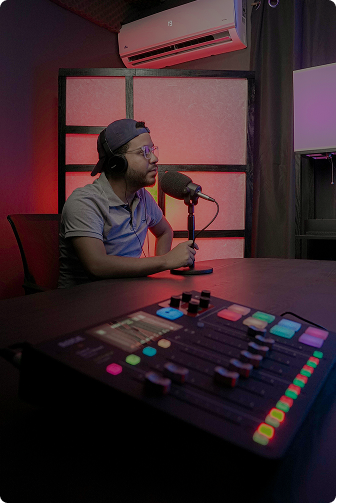Zooming into wearable medical devices with Lucy Jung
Zooming into wearable medical devices with Lucy Jung
.png)
In this interview Lucy Jung (CharcoLtd; Cambridge, UK) discusses the use of wearable medical devices, their recent emergence, the current impact they are having on healthcare and what the future holds for this technology. Lucy specifically discusses the creation of CUE1, a non-invasive, wearable medical device for people with Parkinson's disease, that improves their movement and quality of life.
What are smart wearable devices and how are they currently advancing medicine?
It is actually quite an exciting time for the smart wearable devices that are out there. There have been lots of developments between engineers and clinicians where they get together to work on wearable devices. I think the excitement is a combination of the technology developing, but also, the development of these special materials that allows people to wear the devices. Because of these technology developments, we will see lots of monitoring devices coming out, including interventions like the CUE1 device that we are developing. And these devices are changing the way that we are providing health care at the moment because we are getting more insight into how individuals are doing in their daily lives to understand their symptoms a bit more and give them personalized tailored care.
Could you tell me about Charco Neurotech; what are the main goals of the company?
Charco Neurotech is developing a medical device for people with Parkinson's disease. It is a non-invasive wearable device called CUE1 that delivers focused vibrotactile stimulation combined together with pulsed cueing to improve the movement symptoms for people with Parkinson's. At the moment, we have about 1,500 people using the device throughout their day to day lives. We have got about 16,000 people on the waiting list. CUE1 has been evaluated in various of settings, including real life testing, and also in hospitals and case studies. We were able to see critical meaningful differences on the MDS-Unified Parkinson's Disease Rating Scale, a questionnaire assessing both motor and non-motor symptoms of Parkinson's. People reported that CUE1 has helped with their stiffness, slowness, rigidity, gait freeze and so on.
What do you think the main rewards and challenges are when creating a wearable medical device?
One of the biggest rewards of working in the sector is that for wearable medical devices, you will be able to see that people using the device constantly are seeing the benefits. Before wearable devices, there were lots of devices that were looking into using visual cueing or auditory cueing to support patients with Parkinson's disease with their movement. But because the usability of these devises was quite poor, people did not actually use the device even though it was helping them. By making the device wearable, people suffering from Parkinson's disease actually use the device in their day to day lives. So I think that is another big reward when creating wearable devices. However, as you mentioned, there are also challenges when making a wearable device. For example, there are a lot of variabilities that you have to consider, especially with the adhesive that we used for CUE1. The adhesive is medical grade, but we had to consider the way it was formatted. What kind of adhesive you use depends on the characteristics of the people that you are working with. So for example, for ourselves, it is people with Parkinson's disease. Usually, these people are elderly, so looking into their skin types was very important. It is also very important to consider the shape of the adhesive to make sure that it fits together well with the device shape. As well as these technical challenges, there are also regulation challenges. For example you have to undertake biocompatibility tests and safety tests and so on. These are all challenges when creating a wearable medical device, but I would like to say that the benefit is much greater.
How did you overcome these challenges when creating CUE1?
I have to say the way that we overcame those challenges was basically by working together with many different people, including people with Parkinson’s disease, clinicians and other stakeholders. This helped us determine the best way to make the adhesive, which is currently using a Velcro loop and hook system, where people can put the device on and take it off when they need to charge it. This has all been designed to make sure that it is easy for people with Parkinson’s to use: I think the key pointer was to make sure that we think about the usability by working together with people with Parkinson’s. In terms of the regulation, throughout the whole time developing CUE1, we were working with partners who were experts in medical adhesives. So I think working together with the right partners was really important for us in overcoming challenges as well.
In your opinion, how will wearable medical devices shape the future of healthcare?
I think that wearable devices, especially in healthtech and medtech, are really exciting because they provide us with a bit more insight into individuals' lives and enable us to really track the symptoms of individuals throughout their day to day lives. At the moment, we try to understand patients' lives as much as possible through assessments in clinics. But by using wearable devices and using the sensors that are available now, we will be able to get more insights, which means that we will be able to provide better tailored care for individuals. So I have to say we are in quite exciting times, and using these wearable technologies will improve the way that we give care for patients with long-term health conditions.
Interviewee profile:

Lucy Jung studied industrial design for her undergraduate degree at Korea University (Seoul, Korea). After university, Lucy worked for a medical device consultancy called PDD in London. She was trained as an industrial designer at Samsung Design membership. Lucy then continued her career by going back to study Innovation Design Engineering at Imperial College London (UK) and the Royal College of Art (London, UK) to really dive into medical devices. During this time Lucy studied multiple sclerosis, paralysis and stroke, mostly around long term conditions that are caused by neurological disorders. She started looking into Parkinson’s disease in 2014. And since then, Lucy has been looking into how we can improve the quality of life for people with Parkinson's using technology and service.
.png)
.png)
.png)


